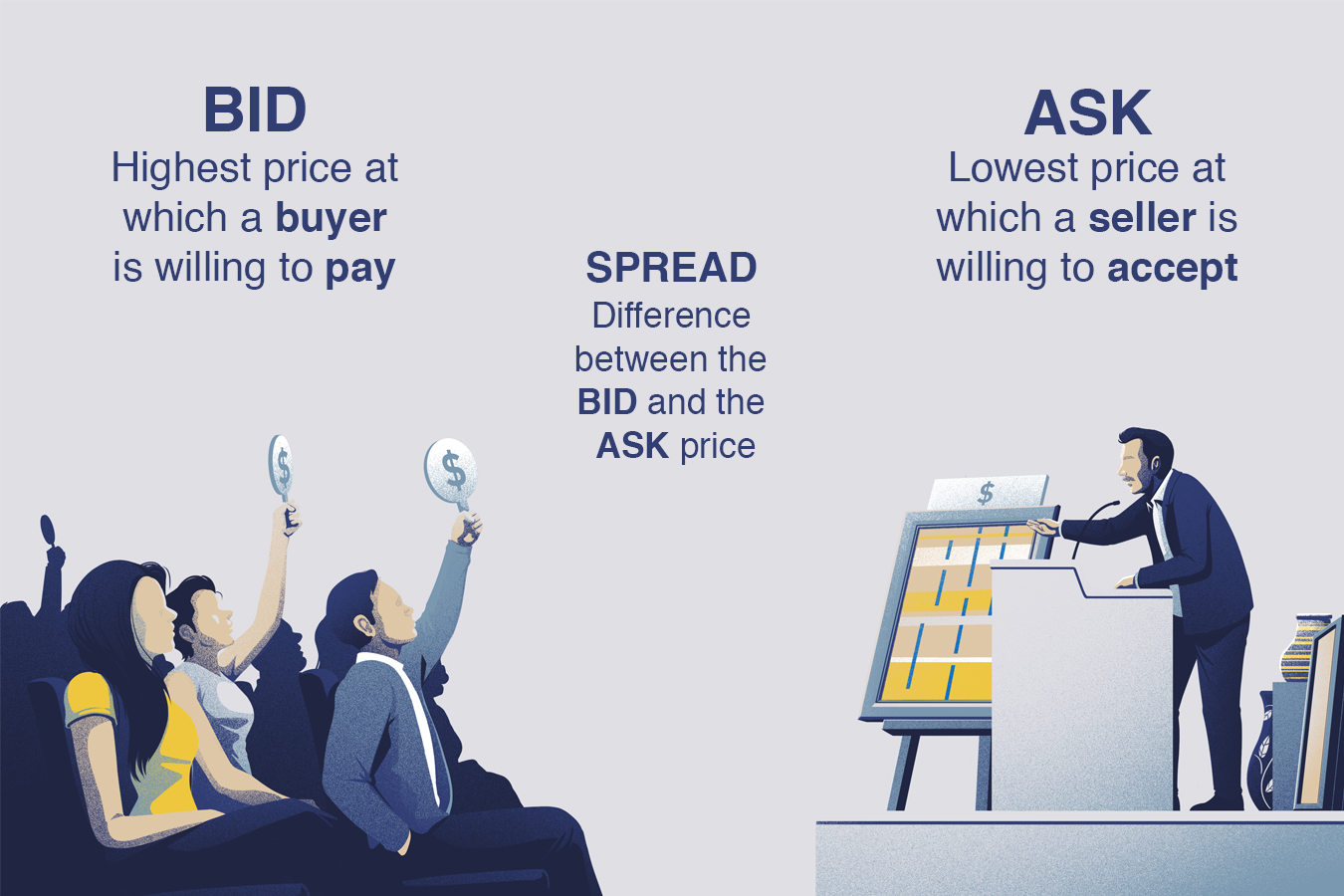Avoiding Common Mistakes: Your Trading Checklist
Written by The Content Team
Published on June 16, 2020
minute read
Share:
Let's face it, mistakes are part of any learning process. But there's nothing wrong with avoiding as many as possible, particularly when it comes to money. With that in mind, here's a seven-step checklist to help you avoid some common trading mistakes.
1) Check a detailed quote
A detailed quote will arm you with key information you need to trade, such as real-time1 bid/ask prices, 52-week high and lows, volume, dividend information and more. Without it, you risk basing your trading decisions on outdated information. You can find a detailed quote by searching a symbol or keyword in the search box on the RBC Direct Investing site or in the Mobile2 app. Plus, you also have access to level 2 quotes3 for many Canadian stocks, which gives you market depth information. Find out more in Making the Most of Level 2 Quotes.

2) Review your order information
Hitting the buy (or sell) button can be one of the most exhilarating parts of trading, but it can also cause a bit of anxiety at times. Here's a quick checklist of things to look for to avoid order-entry errors:
- Correct symbol and stock exchange. Enter a name or symbol in the search bar and you'll get a list of investments related to it. You can confirm which exchange it's listed on and that the symbol is the right one for the company or security you are looking for. Some securities are listed on more than one exchange, so you may see both Canadian and U.S. listings; check that your order form shows the market (US or CDN) that you intended.
- Correct spellings. There are often companies or securities with very similar names and spellings; make sure you've entered the one you meant to. Use the search box to find a detailed quote and check the company description.
- Right account. If you've got more than one account, make sure you've chosen the right one for this transaction to avoid any unintended tax consequences or foreign-exchange fees.
- Right number of shares. Double-check that you've entered the number of shares you intended to buy (or sell) and confirm the dollar amount using the online calculator.
3) Check your order status
Checking your order status lets you verify that your instructions have gone through and you've successfully done what you intended to do. Plus, you can confirm that you haven't duplicated any orders. On the RBC Direct Investing site, you can find "Check My Orders" under the Place an Order menu, or use the yellow action button in the Mobile app to quickly view your order status. You'll be able to see if an order has been filled, partially filled or possibly rejected – which can happen for a few reasons, including if the stock is halted or information has been entered incorrectly. You can also receive email notifications on the status of your orders. You can update your notification preferences under your profile information.
4) Know your order types
For stocks and ETFs, you've got two main order choices – market and limit. With a market order, you pay (or receive) the best price available at the time your order is received by the market; this tends to be the fastest way to get your order executed. If the market is closed, you'll get the market price the next trading day, which can sometimes vary greatly from the previous day's close. Limit orders offer more control by allowing you to set the maximum price you're willing to pay or the minimum price you're willing to accept within a certain timeframe. (It's also good to track your limit orders so you don't double-up on orders without realizing it.) Stop and stop-limit orders are also commonly used when investors aren't available to monitor their holdings for a period of time. Find out more in What are Stop and Stop-Limit Orders?
5) Fund your account
To buy your first investment, you first need cash in your account. At RBC Direct Investing, there are a number of ways to direct funds to your account – either by transferring cash from your RBC bank account or another financial institution, by converting Avion points to cash, setting up a pre-authorized contribution (PAC) plan or by depositing a cheque, which can be done quickly through the RBC Mobile app. Find out more about each in How to Fund Your Account.
6) Review Canadian/U.S. considerations
You have both a Canadian and U.S. side to your account for all accounts at RBC Direct Investing, except Registered Education Savings Plans (RESPs). This means that when you buy or sell an investment, you can choose in which currency (Canadian or U.S. dollars) you wish the trade to settle by selecting CAD or USD on your stock order entry. Ensure you choose the right account from the drop-down menu, and be mindful that if you choose to buy an investment in one currency but only have the cash in the other currency, you will need to convert the cash before the settlement date in order to settle any negative cash balances. Find out more in Dual Currency FAQs.
For foreign-exchange transactions, you can place a funds transfer request from your U.S.-dollar bank account, or you can complete a foreign-exchange transaction right in your RBC Direct Investing account. Find out more in Transfers, Foreign Exchange and Contributions FAQs.
7) Choose the right account type
Some stocks that trade on the NASDAQ Bulletin Board/Pink Sheet over-the-counter market are not eligible for purchase in registered accounts, including RESPs, Tax-Free Savings Accounts, Registered Retirement Savings Plans and Locked-In RSPs. They're called non-qualified investments. Canada's Income Tax Act and regulations determine if a security is a "qualified investment," and the Canada Revenue Agency (CRA) can impose tax penalties for any non-qualified investments held within registered plans. Find out more in Owning a Non-Qualified Investment Can be Costly and What Investments Can I Hold in My TFSA?
We focused on trading specifically here, but an important part of the investing process is knowing what investments are right for you and understanding how they fit into your overall plan. Check out Simple Principles for Successful Investing, part of the Investing Ideas & Strategy Guide, to find out more.
RBC Direct Investing Inc. and Royal Bank of Canada are separate corporate entities which are affiliated. RBC Direct Investing Inc. is a wholly owned subsidiary of Royal Bank of Canada and is a Member of the Investment Industry Regulatory Organization of Canada and the Canadian Investor Protection Fund. Royal Bank of Canada and certain of its issuers are related to RBC Direct Investing Inc. RBC Direct Investing Inc. does not provide investment advice or recommendations regarding the purchase or sale of any securities. Investors are responsible for their own investment decisions. RBC Direct Investing is a business name used by RBC Direct Investing Inc. ® / ™ Trademark(s) of Royal Bank of Canada. RBC and Royal Bank are registered trademarks of Royal Bank of Canada. Used under licence. © Royal Bank of Canada 2020.
1Real-time quotes for options and over-the-Counter (OTC) securities are available upon accepting the terms and conditions of all exchange agreements on the RBC Direct Investing online investing site.
2RBC Mobile is operated by Royal Bank of Canada, RBC Direct Investing Inc. and RBC Dominion Securities Inc.
3Level 2 quotes are available on stocks and ETFs that trade on the TSX and TSX-Venture exchanges for all clients. Level 2 quotes are also available on stocks and ETFs that trade on the Canadian Securities Exchange and Nasdaq for Active Trader clients upon accepting the terms and conditions of all exchange agreements on the RBC Direct Investing online investing site.
The Avion Rewards program is offered by Royal Bank of Canada and is subject to the Avion Rewards Terms & Conditions. You may only use your Avion points through RBC DI to: (1) pay for trade commissions on your eligible RBC Direct Investing accounts; or (2) transfer points for cash contributions to your eligible RBC Direct Investing accounts. It is your responsibility to make sure you have sufficient contribution room within your registered plan when redeeming points for cash contributions to your registered accounts and/or when you use your Avion points to pay for trade commissions on a registered account. The Canada Revenue Agency may apply tax penalties for over-contributions. RBC Direct Investing is not responsible for any such penalties.
The views and opinions expressed in this publication are for your general interest and do not necessarily reflect the views and opinions of RBC Direct Investing. Furthermore, the products, services and securities referred to in this publication are only available in Canada and other jurisdictions where they may be legally offered for sale. If you are not currently resident of Canada, you should not access the information available on the RBC Direct Investing website.
Explore More

5 Ways to Get More Out of Your RESP
How can you make the most of this investment vehicle? We explain.
minute read

There's an ETF for That!
Find out more about the options that are out there
minute read

ETF Trends from the RBC Capital Markets Trading Floor – May 2025
Here’s what we saw on the trading floor in May 2025
minute read
Inspired Investor brings you personal stories, timely information and expert insights to empower your investment decisions. Visit About Us to find out more.







